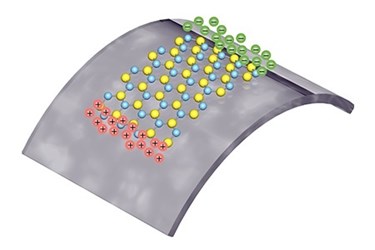World's Thinnest Electric Generator Could Revolutionize Medical Devices
By Chuck Seegert, Ph.D.

Piezoelectricity has been generated at many different geometries and sizes, but now it has literally been taken to new dimensions. Groundbreaking work from Columbia Engineering and the Georgia Institute of Technology has miniaturized piezoelectric material to 2D sheets that are only a few atoms thick.
Certain materials when stretched or compressed generate an electric voltage. Conversely, when these same materials are subjected to electrical current, they can expand and contract — sometimes very rapidly. This phenomenon is called the piezoelectric effect, and it is used in many applications including ultrasonic generators that must vibrate millions of times per second.
While the piezoelectric effect is well studied and understood in 3D materials, it has never before been observed in flat, 2D materials. According to a recent Columbia Engineering press release, researchers have developed a new material composed of molybdenum sulfide (MoS2) that is only a few atoms thick. The material is optically transparent, weighs next-to-nothing, and can be stretched and bent in many directions.
Stretching MoS2 flakes in a cyclical manner was shown to create oscillatory piezoelectric voltages and currents, according to a study published by the team in Nature. Using MoS2 with odd numbers of atomic layers enabled the successful demonstration. Apparently, MoS2 was theoretically predicted to have piezoelectric qualities, but its effects were not seen in bulk structures because opposing layers of the material cancel out the piezoelectric effects.
Experiments were also conducted on monolayers of MoS2 material as well, and those tests revealed that a strain of 0.53 percent led to peak outputs of 15 mV and 20 pA. This corresponded to a power density of 2 mW-2 and a mechanical-to-electrical energy conversion efficiency of 5.08 percent, according to the study.
“This material—just a single layer of atoms—could be made as a wearable device, perhaps integrated into clothing, to convert energy from your body movement to electricity and power wearable sensors or medical devices, or perhaps supply enough energy to charge your cell phone in your pocket,” said James Hone, co-leader of the research and professor of mechanical engineering at Columbia Engineering, in the press release.
The new technology may allow energy to be gathered from its environment. This strategy is also employed in motion-powered pacemaker devices that use self-winding componentry to generate electricity by converting energy from a beating heart.
Image Credit: Lei Wang/Columbia Engineering
